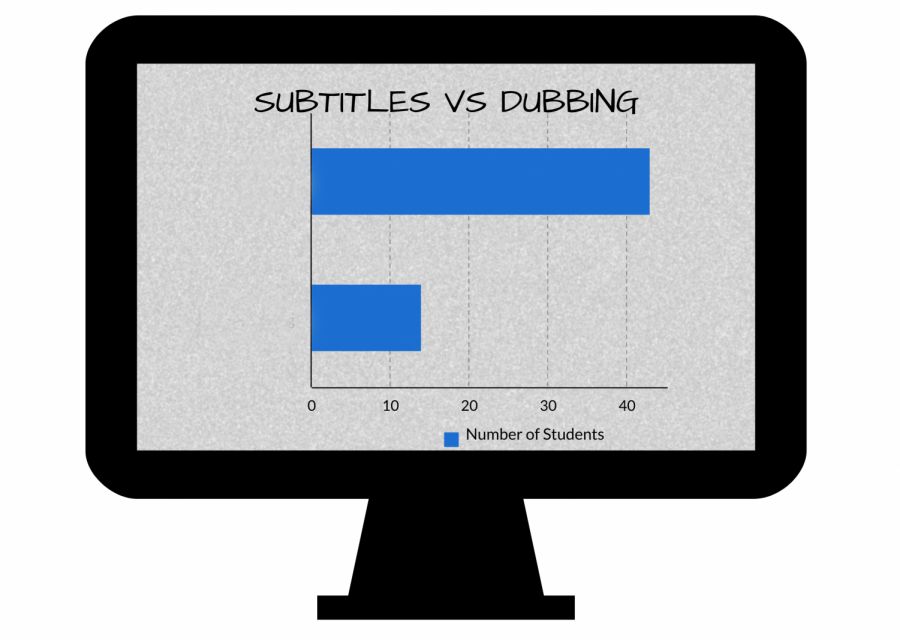Lost in Translation: Dubbing vs Subbing
The Reasons Why Subtitles Take the Dub Over Dubbing
Hundreds of struggling adults compete against each other in a series of twisted children’s games (think red light, green light and tug of war) for the ultimate cash prize: the equivalent of 38 million U.S. dollars. The only catch? If you lose, you die.
Thousands of viewers tuned in for the premiere of Netflix’s “Squid Game” in early September, skyrocketing it to the top of the Netflix charts and causing a mass craze on social media, bringing its actors into critical acclaim and cultivating a loyal fan base.
Netflix announced that the show is on track to becoming the most popular original series on the platform, set to top even favorites such as “Bridgerton” and “Stranger Things.” This will also make it the first time that a South Korean show would take the number one slot globally.
With any popular foreign show, however, comes a heated debate about how the show should be translated. In the case of “Squid Game,” many fans were dismayed to find that American viewers were watching the show with English dubs, instead of watching it with the original Korean audio and English subtitles.
Subtitles translate the original dialogue into another language, and the words appear on the screen in sync with the spoken dialogue.
Dubbing is a post production process that replaces the original actors’ voices with voice actors who translate the dialogue into an alternate language.
Subtitling is the best option when it comes to preserving the actors’ performance and best understanding the film. Without the voice of the original actors, viewers listening to the dubbed version of shows are not able to hear intonations and tones that are used in the context of the scene.
Some people complain that the words in subtitles “move too fast” for them to read. But, the lack of synchronization between the dubbed voices and the actors mouth moving is equally as distracting.
Additionally, dubbing is a longer, costly process compared to subtitling; whereas subtitles only require a trained translator, dubbing requires that and several professional voice actors, a recording studio, and specialized editors.
This debate also points to a bigger problem when it comes to foreign media in America. Foreign language films are often seen as the “other” movie genre.
For example, award shows like the Golden Globes usually have a separate category for foreign films. Streaming platforms like Netflix group all films that speak in any language other than English under the “International” category.
This partitioning of international films and Eurocentric films show Americans’ aversion to anything “foreign.” Instead of appreciating the wide range of culture and diversity in international films, the automatic choice is to block out the original language and replace it with the “default” language, erasing that culture’s significance and identity.
It is important to reiterate that both subtitling and dubbing are helpful for viewers with disabilities. But, for people who can, subtitles are the way to go for a more immersive and culturally rich experience.
As Bong Joon Ho, the director of the Oscar-winning Korean film “Parasite,” advised, “Once you overcome the one-inch-tall barrier of subtitles, you will be introduced to so many more amazing films.”

This is Alycen's third year in The Point. Last year, she was the center spread editor. In her free time, she enjoys reading thrillers, shopping, and eating...
